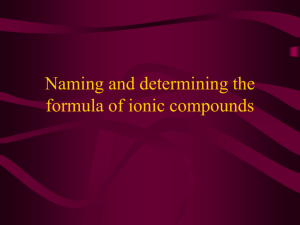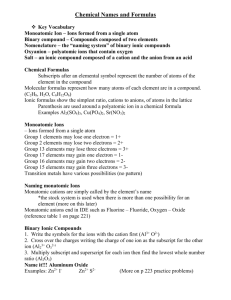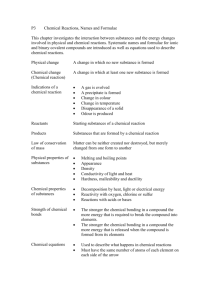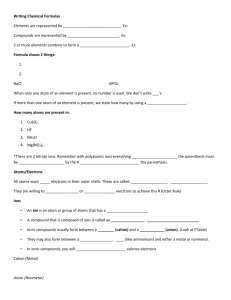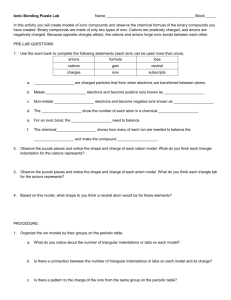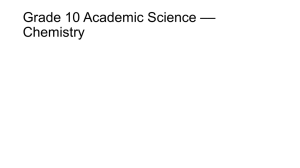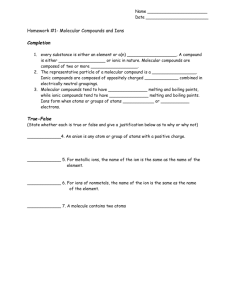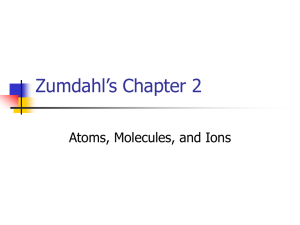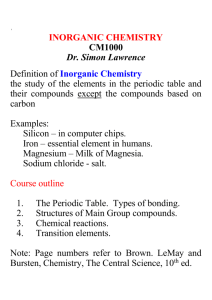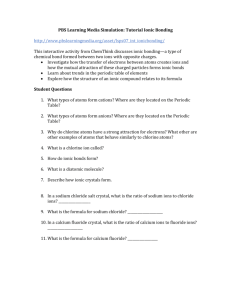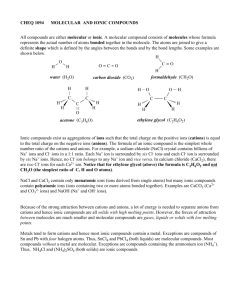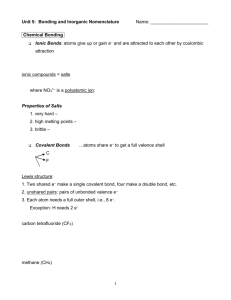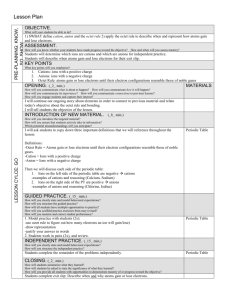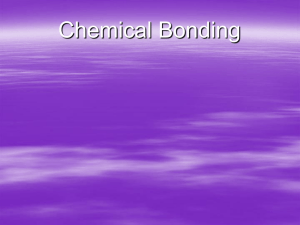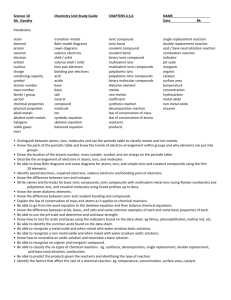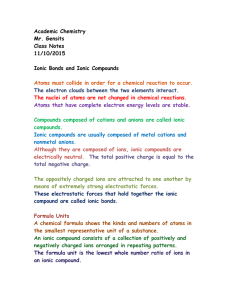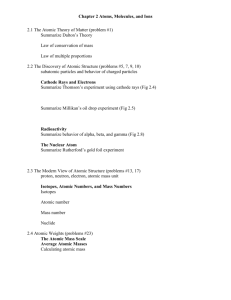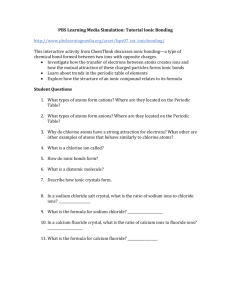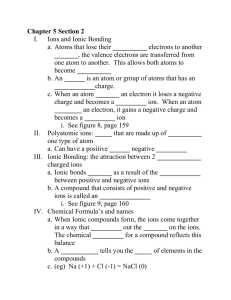Atoms, Ions, and Compounds
advertisement
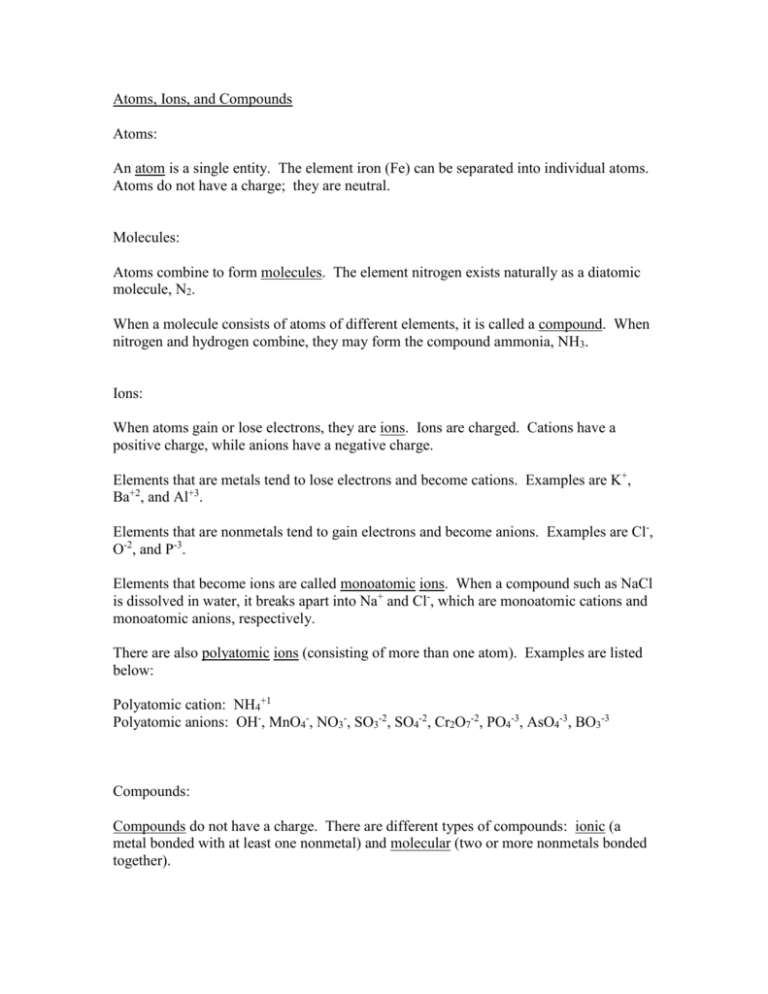
Atoms, Ions, and Compounds Atoms: An atom is a single entity. The element iron (Fe) can be separated into individual atoms. Atoms do not have a charge; they are neutral. Molecules: Atoms combine to form molecules. The element nitrogen exists naturally as a diatomic molecule, N2. When a molecule consists of atoms of different elements, it is called a compound. When nitrogen and hydrogen combine, they may form the compound ammonia, NH3. Ions: When atoms gain or lose electrons, they are ions. Ions are charged. Cations have a positive charge, while anions have a negative charge. Elements that are metals tend to lose electrons and become cations. Examples are K+, Ba+2, and Al+3. Elements that are nonmetals tend to gain electrons and become anions. Examples are Cl-, O-2, and P-3. Elements that become ions are called monoatomic ions. When a compound such as NaCl is dissolved in water, it breaks apart into Na+ and Cl-, which are monoatomic cations and monoatomic anions, respectively. There are also polyatomic ions (consisting of more than one atom). Examples are listed below: Polyatomic cation: NH4+1 Polyatomic anions: OH-, MnO4-, NO3-, SO3-2, SO4-2, Cr2O7-2, PO4-3, AsO4-3, BO3-3 Compounds: Compounds do not have a charge. There are different types of compounds: ionic (a metal bonded with at least one nonmetal) and molecular (two or more nonmetals bonded together). Ionic compounds: Binary ionic: NaCl, KBr, CaS, MgO, BaF2, Al2O3, CuCl2 Ternary ionic: MgSO4, Ba(NO3)2, Ca3(PO4)2, LiOH Molecular compounds: Binary: CO2, Br2O7, CH4 Ternary: C6H12O6 Acids: Binary: HCl, HI Ternary oxyacids: HOCl (monoprotic), H2SO4 (diprotic), H3PO4 (triprotic)

